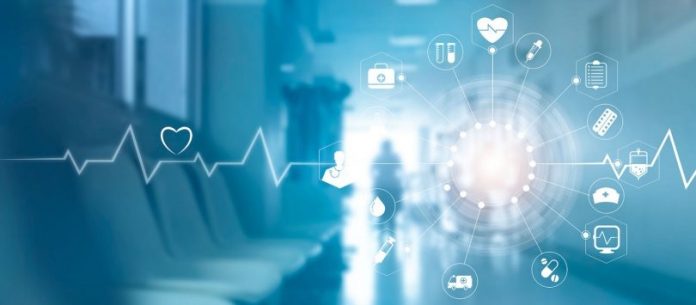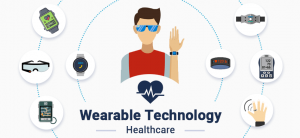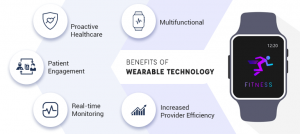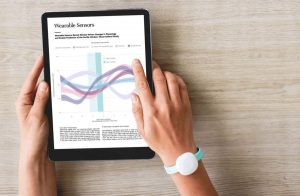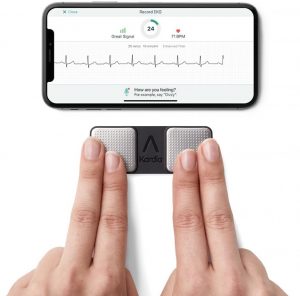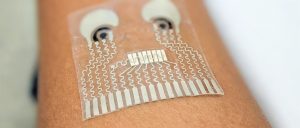Some people may call the internet the whole nine yards of human knowledge. It’s everything that we know, at our fingertips. So it’s no surprise when smartphones came out, we all were enamored by them. A smartphone gave us the ability to connect to human knowledge anywhere we wanted. However, it naturally begged the question about the next logical step. What comes after the smartphone? Will there be a new form of human connection with knowledge? The answer to the above question lies in one of the most important trends that are happening around us; Wearable technology for healthcare. From 1571, when the first wristwatch was presented as a gift to Queen Elizabeth, which was then known as arm watch (because of its huge size), to the revolutionized tiny fit bits and smartwatches of today’s age, wearable technology has become a confluence of innovation that brought a paradigm shift in the way we live our lives.
Medically relevant Wearable
This is different than it was before, because instead of just tracking running, and heart rate, and sleep, and calories, we are talking cholesterol. We are talking glucose. We are talking about things that you’d get at a check-up when you go to a doctor. Now what is really, fundamentally important to understand is that within 5 to 6 years, this wearable technology could solve our medical crises. Wearable applications can directly impact clinical decision-making. Some believe that wearable technologies could improve the quality of patient care while reducing the cost of care, such as patient rehabilitation outside of hospitals. The big data generated by wearable devices is both a challenge and an opportunity for researchers who can apply more artificial intelligence (AI) techniques to these data in the future. Piloted by the increasing demand of consumers to monitor their own health, the use of wearable technology has more than tripled in the last four years.
Besides measuring data which includes vital signs such as heart rate, blood pressure, and body temperature, as well as blood oxygen saturation, posture, and physical activities through the use of electrocardiogram (ECG), ballistocardiogram (BCG), and other devices, potentially, wearable photo or video devices could provide additional clinical information. These devices can be attached to shoes, eyeglasses, earrings, clothing, gloves, and watches. Wearable devices also may evolve to be skin-attachable devices. Sensors can be embedded into the environment, such as chairs, car seats, and mattresses.
Top Wearable Tech: Hands, Full of Health
Smartwatches
Smartwatches in 2018 accounted for nearly 60% of the overall wearables market, according to GlobalData figures, mostly attributed to the remarkable performance of Apple Watches, Xiaomi-backed Huami’s Amazfit, and Fitbit Versa. Samsung gained substantial traction in the market with its Galaxy Watch series, while Withings released its analog-style series of smartwatches.
The growing inclination of consumers to access smartphone-like features from a watch remains the primary growth driver. Supplementing this factor, technological improvements such as seamless body integration, health, and fitness information accessibility, and modular aesthetics are key growth stimulants for smartwatches’ adoption.
Traditional players Apple, FitBit, Garmin, and Polar all have products categorized as smartwatches; however, few have entered the health space, limited to Apple’s Apple Watch. Moving away from purely fitness tracking, the segment is witnessing a significant surge in disease-specific functionality smartwatches, such as the medical-grade Embrace2 smartwatch by Empatica enabling continuous monitoring of sweat levels detecting the onset of epileptic seizures with an accuracy of 98%, according to its validation studies.
Smartwatches are dominating the wearable tech market so much that they smacked the fitness trackers to the ground. This domination can be attributed to the rapid replication of Faintness trackers Unique Selling Propositions (USP) in smartwatches. Overshadowing of fitness trackers’ USPs such as step counts, calorie burns, sleeping pattern, distance walked/ run, etc., smartwatches now offer improved stats—for example ECG, non-invasive glucose monitoring, and fall detection—and social connectivity. These health-orientated applications allow more functionality specific to the consumer.
Smart Glasses Revolutionizing Healthcare Delivery
In Star Trek (1969), the world got the very first glimpse of a device that can be worn as glasses that would give the virtual scan of whatever comes into its range of vision. However, that was a science fiction movie, today it is a reality. Even before the pandemic, Healthcare was on the road to becoming even more digital. By 2018, individual patients were generating more than 80 megabytes of EMR (electronic medical records) and imaging data each year, which is manageable in isolation but incredibly challenging at scale. COVID-19 supercharged this shift with a sudden pivot to telemedicine and at-a-distance diagnoses. Virtual health delivery now tops the list of 2021 issues in the healthcare industry. Consequently, medical professionals need a new way to address emerging challenges, and the solution may come from an unlikely source: augmented reality smart glasses.
Unlike more familiar wearable tech such as smartwatches and fitness trackers, smart glasses haven’t cracked the mainstream market. While early attempts to market smart glasses promised a revolutionary AR experience, in practice they were panned by users and observers alike. Smart glasses in healthcare could supply specific, patient-related information on demand to help health professionals make immediate diagnostic decisions.
Smart glasses are also being used to improve diagnostics. Medical practitioners, sitting thousands of miles away can assist the patients with a diagnosis or use glasses as a vehicle for delivery of diagnostics data from an artificial intelligence consultant. These glasses are also being widely used by healthcare professionals for telemedicine operations. Talking about the wide acceptance and the application of wearable tech for healthcare without mentioning COVID- 19 would be incomplete, as wearable technologies are the uncelebrated heroes of the COVID- 19 pandemics. Patients are capable of monitoring their oxygen levels or heartbeat irregularities to curb the risks of some serious outcomes on their health. On the other hand, for doctors and medical professionals, AR glasses offer the ability to do diagnostics remotely. Moreover, Connected AR devices allow healthcare professionals to Livestream and record key medical procedures for later training or assessment. Tools such as Vuzix smart glasses have already been used in situ to assist with surgeries such as knee replacement.
AVA- Focusing on Women’s Health
Tracking and monitoring the period cycle of women can let them get rid of, the redundant amount of stress that comes along with remembering their monthly dates. Furthermore, it can give better insights into a women’s health, and that is what AVA is all about. The night-only wearable gives women insights into their fertility, pregnancy as well as their overall health. For pregnant women, it assists them to keep a track of their weight, sleep, and stress levels. Researchers and medical professionals back the accuracy of this device, claiming it to be 89% accurate.
AliveCor- Personal EKG
It is a portable device that can easily slip into the pocket and can save lives! This device takes medical-grade EKG recordings (detect Atrial Fibrillation, Bradycardia, Tachycardia, or Normal heart rhythm) in just 30 seconds and delivers it to a smartphone. This data can be tracked over time and can be shared with medical professionals for instant review. The users just need to put their fingers on the sensors and get the information within seconds. No more messy wires, patches, or gels!
BioScarf- Fashion meets Health
BioScarf is perhaps the most fashionable surrogate to the regular air- pollution masks. These masks can prove a high degree of safety to its users from potential repertory health issues. A built-in N95 filter in the scarf helps strain over 99.75% of the airborne pollutants. For instance, it can keep away pet dander, pollen, smoke, pm2.5, and other contaminants that can keep strep, influenza, pneumonia, and tuberculosis at bay. This one-time purchase is any day better than buying several masks and using them.
Bio Patch- All in One health Monitor
Bio Patches are the latest, non-invasive wearables that can help medical professionals monitor their patients’ heart rate, ECG, heart rate variability, respiration rate, and activity. A soft, stretchy skin patch that can be worn on the neck to continuously track blood pressure and heart rate while measuring the wearer’s levels of glucose as well as lactate, alcohol, or caffeine. It is the first wearable device that monitors cardiovascular signals and multiple biochemical levels in the human body at the same time. It would also serve as a great tool for remote patient monitoring, especially during the COVID-19 pandemic when people are minimizing in-person visits to the clinic.
In October 1958, the first mechanical device was implanted in a human body, a pacemaker. However, that deceive only functioned for 3 hours. But that device made a dent in the universe of healthcare. Since then, the ever roaring advancements of technology and devices haven’t only limited to pacemakers. Devices such as hearing aids, cochlear implants have come a long way from ear trumpets to the tiny but powerful devices behind the ear, making a significant difference to millions of people with hearing loss. The devices that were only considered to be a part of science fiction are now being used in daily life by people all around the world. Wearable technology is widening the scope of healthcare and more than that it is widening the prevention of an illness even before it occurs.
By Mayank Vashisht | Technology Journalist | ELE Times



